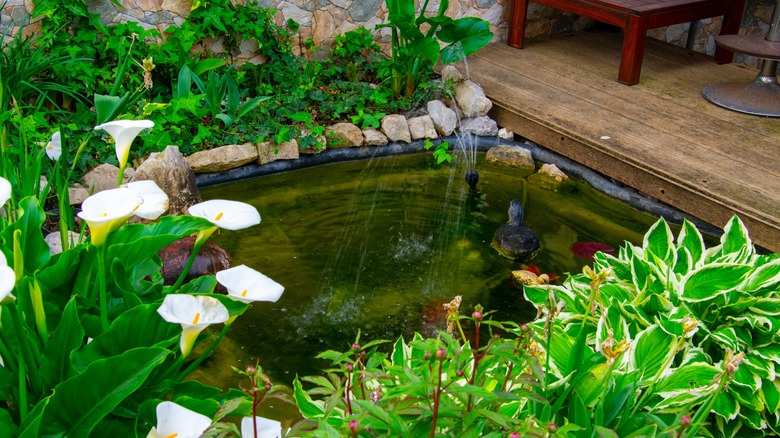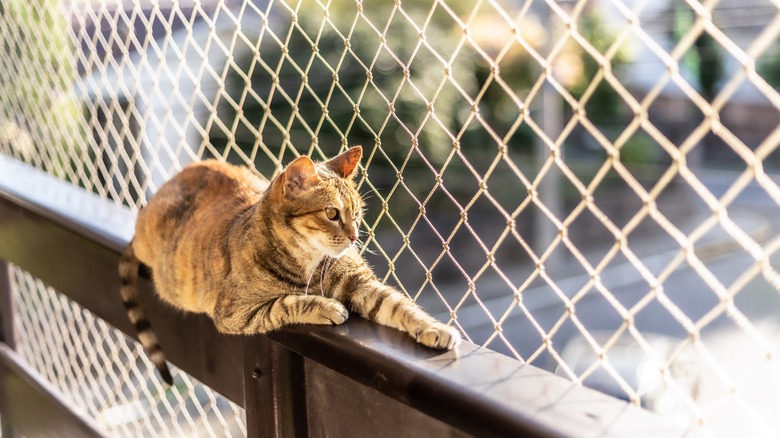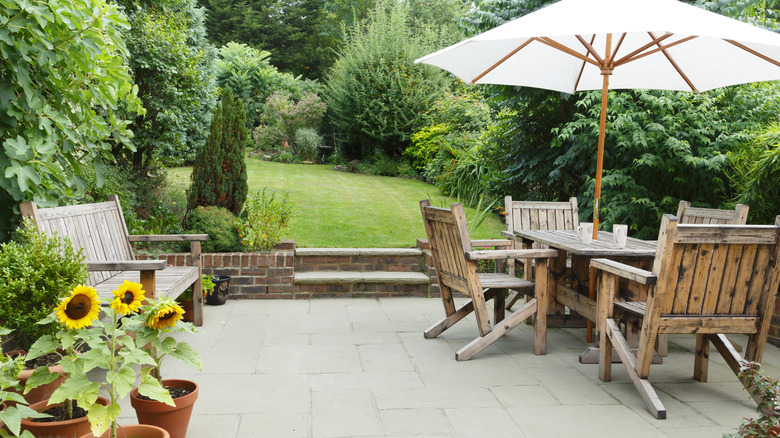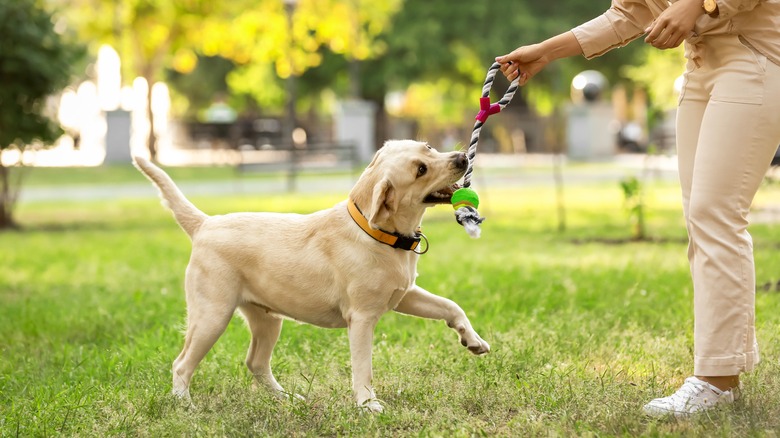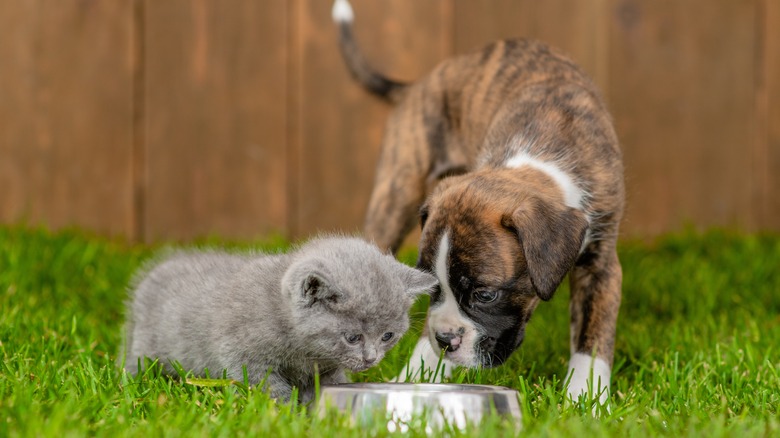How To Make Your Home Patio More Pet-Friendly
As a pet owner, your home isn't just yours — it's also your pet's. And that includes your outdoor spaces, like the patio. Your journey to creating a pet-friendly patio involves understanding your pet's needs and preferences and integrating them into your patio's design and maintenance routine. For example, a shaded area serves as a haven for your furry companion, a place where they can retreat from the heat. You also need to consider which plants are most suitable for your pet's health since many can be toxic to cats and dogs. Other considerations include the establishment of secure boundaries, the inclusion of shady retreats, the provision of engaging play equipment, and the maintenance of the patio to ensure a clean and safe environment.
Indeed, every decision contributes to a more pet-friendly patio, and yours can be transformed into an oasis where your animal pals can safely explore, play, and relax with clever modifications and additions. If you're unsure where to start, this article offers valuable advice and pointers.
Choose pet-safe plants
Ensuring your garden is safe for pets starts with careful plant selection. Some plants, while beautiful, can be hazardous to your pets. Dogs, in particular, are known to munch on grass and other plants; even cats may be curious enough to take a bite. So, what you plant on your patio can significantly impact your pet's well-being. Firstly, identify potentially harmful plants that are already present. These include oleanders, azaleas, lilies, and daffodils, which can cause severe illness or even death in pets. Remove and replace them with pet-safe alternatives.
Pet-friendly plants include varieties like marigolds, snapdragons, fennel, and rosemary. Each of these plants not only adds color and life to your patio but can also withstand a bit of attention from your pets. However, while these plants are non-toxic, overeating some varieties could lead to digestive issues in pets. Therefore, it is crucial to monitor your pet's behavior around plants and teach them — especially puppies — what is off-limits.
Additionally, consider creating a separate garden area for pet-friendly grasses. Pet grass, catnip for cats, and even a small patch of sand for dogs to dig in can make your patio a much more enriching environment for your furry friends.
Install fencing or pet gates
Securing the perimeter of your patio with a fence or pet gate isn't just a recommendation — it's a necessity. This precaution prevents your pets from wandering off into potentially perilous zones such as busy roads or unfamiliar neighbors' yards. It also keeps other unwanted animals from entering your pet's safe space. The type of fencing you opt for hinges largely on the pet you're catering to. Small pet breeds, like cocker spaniels and Maltese, usually don't require high fences; nonetheless, a low fence is typically sufficient to contain them while allowing them to enjoy the view and fresh air. However, a higher fence becomes essential if you're the proud parent of a larger dog breed, particularly those known for their jumping prowess. Breeds like huskies, boxers, and labradors are known for their athletic abilities, which include impressive high jumps.
Additionally, some pets are known for their excellent climbing or digging skills. If your pet falls into this category, you may need to consider installing a fence that extends underground or features a roller bar at the top. An underground fence deters diggers, while a roller bar thwarts climbers. Wood and metal are sturdy, durable options that often come to mind when considering fencing materials. However, the safety of your pet remains paramount. You need to ensure zero large gaps between the fences where your pet could stick its head through and get stuck, leading to distress or injury.
Set up a shaded area
Many pet owners often forget about sun protection. Your dogs are equally vulnerable to the sun's harmful rays as you are. Long-term exposure can cause a variety of problems, such as heatstroke, dehydration, and even sunburn — this is especially true during the sweltering summer months. Therefore, planning effective shaded areas is a crucial first step in establishing a pet-friendly patio. These fabulous havens keep your pets safe and cool while offering much-needed relief from the heat. But creating this sanctuary requires careful planning. First, you need to consider the placement. Monitor where and when the sun hits your patio. Ideally, the shade should be located where it can provide cover from the sun for most of the day.
If you have trees or tall shrubs on your patio, they can act as natural shade providers. However, it's essential to ensure these plants are safe for pets. If natural shade is not an option or additional cover is needed, plenty of alternatives exist. Patio umbrellas are typically easy to install and can be moved around as needed. Pergolas, on the other hand, are more permanent structures. They can be an excellent choice if you're looking for a more substantial shade solution. Plus, you can grow pet-safe climbing plants or vines on them for added shade and aesthetic appeal. Pet canopies are typically made from breathable, UV-resistant fabric and can be easily installed over your pet's favorite lounging spot.
Provide safe play equipment
Playtime is a crucial part of a pet's life. Not only does it ensure their physical fitness, but it also caters to their mental health, preventing boredom and subsequent destructive behavior. When considering play equipment for your patio, it's important to consider what would best cater to your pet's needs, size, and preferences. For dogs, consider setting up an outdoor agility course, including jumps and balance beams. It provides physical exercise, stimulates their minds, and can help instill obedience and agility. However, it's not enough to just set up the equipment; training your dog to use it correctly is also vital. Ensure your pup is fit enough to start, and use plenty of positive reinforcement. Above all, make sure your dog is having fun.
If you have smaller dogs or puppies, they might enjoy a sandbox. Digging is an instinct for many dogs, and a sandbox gives them a safe place to dig without ruining your plants or lawn. Make sure the sand is clean and free of any potential contaminants. For cats, climbing and scratching are natural behaviors — setting up a cat tree, an outdoor scratching post, or even some climbing shelves can entertain your feline friend for hours. A cat tree with several levels and hiding places mimic cats' environment in the wild, satisfying their instinct to climb and observe from high vantage points. Ensure these structures are stable and cannot topple over if your cat jumps on them.
Other things to remember
In your effort to design a pet-friendly patio, a dedicated hydration station will also come in handy. Your pets, like you, need to drink plenty of water, especially if they're spending time outside on a hot day. Dehydration in animals can have serious health repercussions, including loss of consciousness and kidney problems. Try proactively ensuring your pups can access clean, chilled water in the patio area. It's crucial to keep the water fresh and to refill the bowl regularly to encourage your pets to drink.
Last but not least, remember that in addition to being a zone where health hazards are usually present, your patio is also a place for your pet to unwind and have fun. Therefore, constantly make an effort to clean your patio. Also, try to exercise caution in your product selection regarding cleaning supplies. Be aware that many commercial cleaning products contain harmful chemicals, so it's best to lean towards natural or pet-safe alternatives.
As you implement these suggestions and tailor them to your pet's needs, you're turning your patio into a haven where your furry friend thrives. So, you're rolling up your sleeves, letting your creativity flow, and embarking on the journey of creating a pet-friendly patio that's enriching both of your lives.

